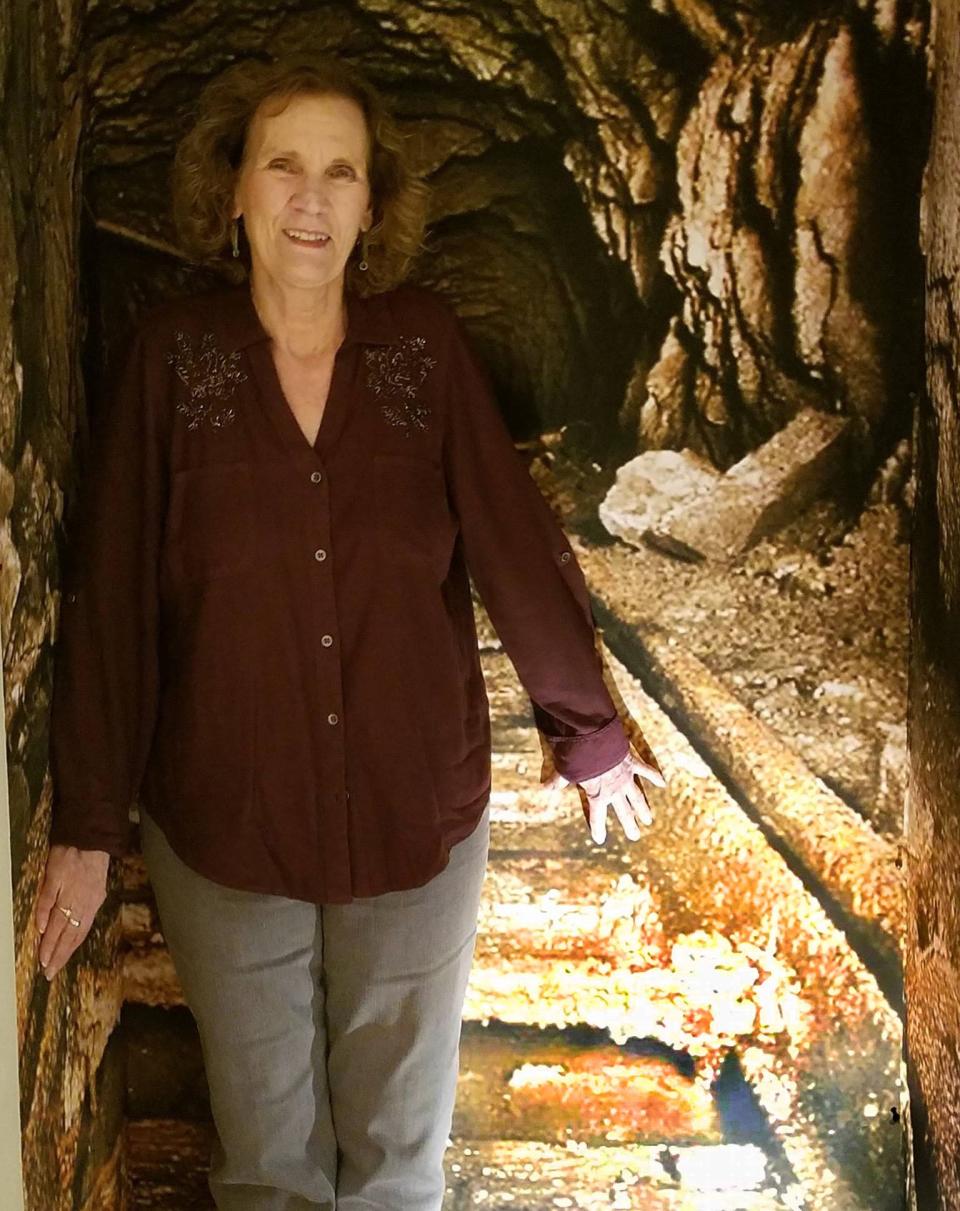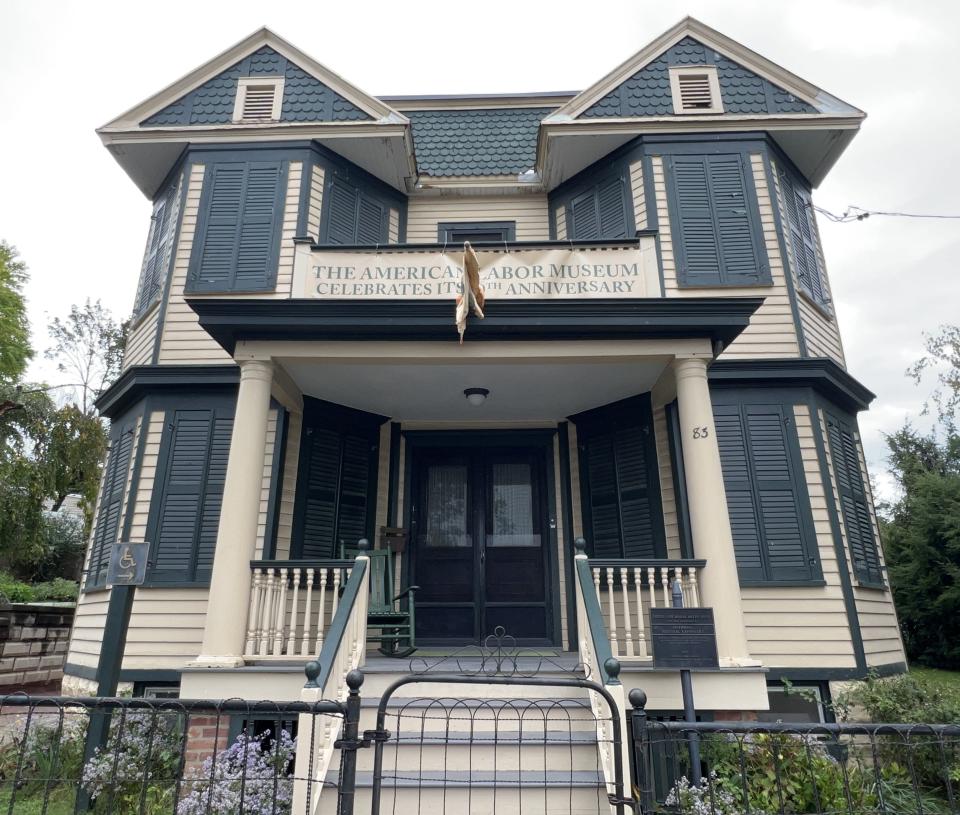Exhibit at Passaic County museum explores issue of child labor in early 20th century
HALEDON — An exhibit that examines the plight of an underage workforce from glass factories and textile mills to the mines of eastern Pennsylvania is displayed for a limited time at the American Labor Museum.
The artwork, by Mary Ann McKay, was designed through experimentation with cold wax and mixed media, including found objects bought at an antique shop and a dollar store.
But it is the tormented faces of children that will draw in museum patrons.
McKay, a retired graphic designer from Aberdeen Township, borrowed vintage photos of real child workers from the turn of the 20th century and incorporated them in the art.
“I want to give them a voice,” McKay said, “because they didn’t have one.”

“Silent Voices: Children of the Industrial Age” will be on view at the museum at 83 Norwood St. through the end of the year.
The museum will host an exhibit tour Saturday at 2 p.m. McKay will be there to answer questions.
The photos that McKay used were taken between 1908 and 1924 by Lewis Hine, a sociologist hired by the National Child Labor Committee to document the rampant exploitation.
Thousands of his photos were given decades later to the Library of Congress, and McKay said she spent many months clicking through them and downloading them from its website.
She then printed and transferred the images to her canvases by coating the surfaces with a gel medium, pressing down on the backs of the photos and soaking the sheets of paper with warm water.
“They were robbed of their childhood,” McKay said. “They didn’t go to school, and if they did, they fell asleep because they worked all night.”

It was not until the Fair Labor Standards Act was enacted that minors were shielded from harsh working conditions.
The law, signed by President Franklin D. Roosevelt in June 1938, stopped most employers from using children during school hours and for certain dangerous jobs. It also established the right to a minimum wage.
Child labor remains prevalent in less civilized parts of the world. According to the latest global estimate by the International Labour Organization and the United Nations Children’s Fund, 160 million children — most of them boys in sub-Saharan Africa — were working in 2020.
And despite longstanding protections in the U.S., the issue continues to raise controversy.
Just weeks ago, Arkansas eliminated a requirement that children under 16 years old get permission to work from their parents. One critic referred to the Youth Hiring Act as a “step in the wrong direction.”
PUBLIC SAFETY: Haledon police compiling vital information to help residents with autism
Evelyn Hershey, the education director at the museum, said child labor reform is an appropriate topic for this area. “Teaching from history, we feel, is very important,” she said.
The museum is a national landmark, a house once occupied by the family of factory worker and Italian immigrant Pietro Botto. It is famously known as the meeting place of silk mill laborers during a historic work stoppage, which lasted for five months in 1913.
McKay’s artwork is hung on the second floor, which the Bottos divided into apartments to collect rent, Hershey said. The nonprofit that runs the museum introduces new exhibits every four months, she said.
The next exhibit will explore the history of Health Professionals and Allied Employees, a union of nurses that formed 50 years ago in Englewood.
Philip DeVencentis is a local reporter for NorthJersey.com. For unlimited access to the most important news from your local community, please subscribe or activate your digital account today.
Email: devencentis@northjersey.com
This article originally appeared on NorthJersey.com: Art display at Passaic County museum examines ills of child labor

